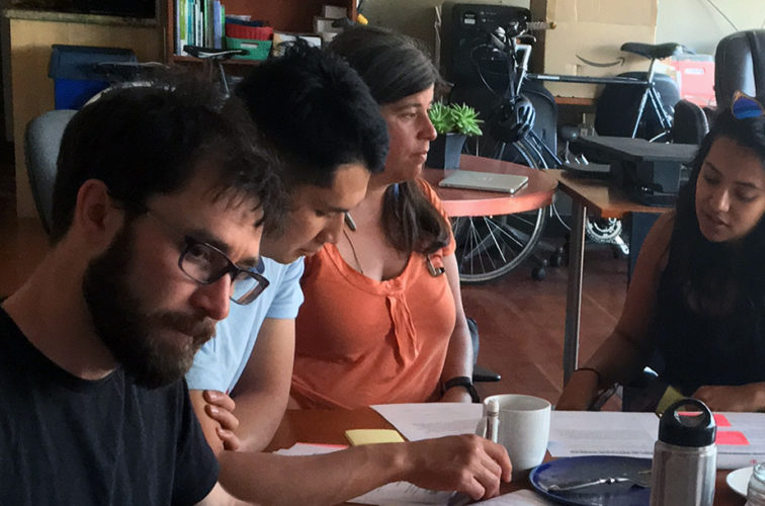How can we make our neighborhoods more resilient to disasters and other disruptions? What initiatives and communities can we learn from? How can we turn existing community spaces into resilience hubs that can serve the community in an uncertain future?
We created “The Resilience We Want: A guide to making your community space into a hub for local resilience & mutual aid” to help groups all over the world develop answers to these basic questions.
As we learned from friends in Puerto Rico rebuilding after Hurricane Maria, and in places around the world, people take pride in their neighborhood by organizing around a wide variety of community spaces. Resilience comes from the social cohesion that forms when people organize in response to real needs.
However, we found a blind spot: most communities approach resilience in terms of disasters and what-if scenarios and they don’t consider current situations. “Disasters give us urgent problems to solve, and we’re comfortable with that,” said Willow Brugh, a community response strategist formerly with Geeks Without Bounds and FEMA’s Field Innovation Team. “But resilience is about realizing that there are more important problems we can choose to solve. Talking about disasters is boring, compared to resilience!”
This 12-page guide introduces the vision and model of a resilience hub, a place where neighbors can deepen a sense of belonging, learn new skills together, provide for basic needs, prepare for disasters, and build a more inclusive and joyful community.
The guide includes:
- Six key strategies for co-creating a vision and plan for your space,
- Six case studies of people are building resilience hubs in different ways,
- Instructions on how to co-host your first and second gatherings, and
- A checklist to collaborate with your neighbors.
We made this guide as a companion to watching “The Response: How Puerto Ricans Are Restoring Power to the People,” our documentary film about people restoring power after Hurricane Maria in Puerto Rico. It can also be used alone to plan resilience hubs.
This guide is mainly for people with access to spaces they love:
- Independent spaces (social clubs, art studios, and urban farms)
- Public facilities (libraries, schools, athletic clubs, and civic centers)
- Religious centers (places of worship and meeting houses)
- Small businesses (cafes, bookshops, and storefronts)
By using this guide, community groups can:
- Co-create a vision for the resilience we want,
- Connect with inspiring people and stories,
- Embrace different points of view in the community, and
- Identify assets and resources that your community space can share!
Go further: Sign up to host a community screening of “The Response.” We’ll send you a guide to help you organize a successful screening and a link to the film (watch the trailer).
This article is cross posted with permission from Shareable.net.





